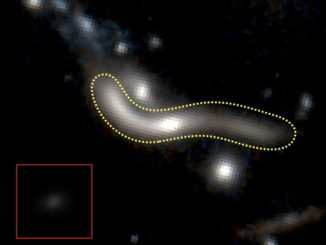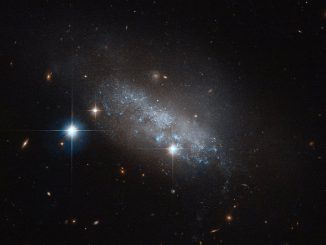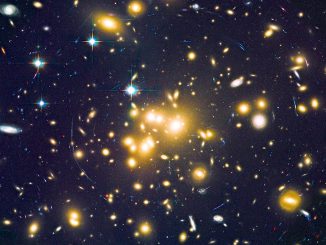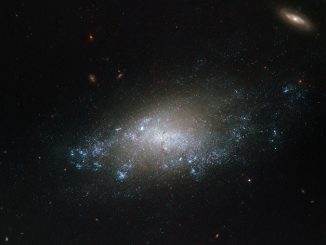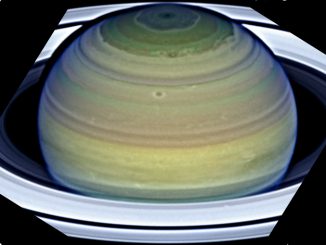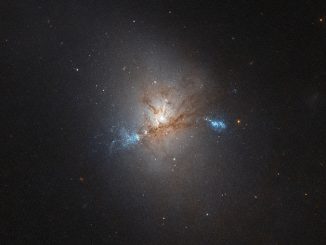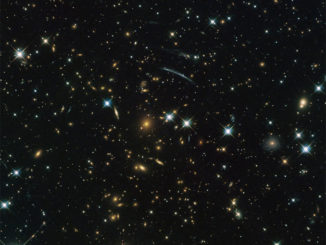
Galaxies like grains of sand, courtesy of Planck
The Hubble Space Telescope imaged a distant cluster of galaxies that was found by ESA’s Planck satellite, which detected distortions in the cosmic background radiation caused by the cluster’s gravity. Some five billion light years from Earth, the cluster’s members appear as a swarm of red-shifted galaxies, along with an arc of bluish light caused by gravitational lensing.


